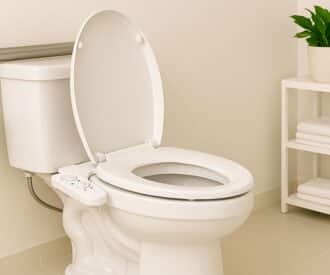
For some older adults, the daily task of getting dressed can become difficult, painful, or impossible to do independently. Joe & Bella explains the helpful features of adaptive clothing, what features to look for, and sizing and fit considerations.
How to find the best fit adaptive clothing for your older adult
As we age, our bodies change, and sometimes, simple daily tasks like getting dressed can become a challenge.
Adaptive clothing and footwear can significantly improve quality of life for older adults, providing comfort, safety, and independence.
By understanding how adaptive clothing is designed, their benefits to older adults, and sizing and fit considerations, you can make informed choices that suit their needs and preferences.
We explain 4 helpful features of adaptive clothing, 4 things to look for in adaptive clothing, and 4 sizing and fit considerations.
4 ways adaptive clothing helps seniors
1. Easy-to-use fasteners and closures
Adaptive clothing often uses alternative closures rather than traditional buttons and zippers – like snaps, magnets, or Velcro.
These easy-to-use fasteners and closures make it easier for older adults to dress themselves without struggling with difficult fastenings.
These types of closures are particularly beneficial to seniors with arthritis or other conditions that affect hand dexterity.
2. Elastic waistbands and adjustable straps
Adaptive clothing with elastic waistbands and adjustable straps can help older adults and continue to dress themselves and maintain their independence.
Elastic waistbands and adjustable straps also make clothes more comfortable and less restrictive. Plus, they help accommodate weight fluctuations and swelling or edema.
3. Open-back and side-opening garments
Open-back and side-opening garments can make it easier for older adults to dress with some assistance.
For people who need assistance with dressing, these garments can be slipped on and off without needing their arms to be raised overhead. This reduces the risk of injury or discomfort and makes the job easier for caregivers.
Some open-back and side-opening garments are designed specifically for wheelchair users, with features like shorter back lengths and longer front lengths to prevent bunching and discomfort while sitting.
4. Slip-resistant and comfortable footwear
Falls are a leading cause of injury among seniors and slip-resistant footwear can help reduce the risk of accidents.
Many adaptive shoes and slippers feature non-skid soles that provide better traction and grip for walking on various surfaces.
Plus, adaptive footwear is often designed with extra depth and width to accommodate edema, orthotics, foot braces.
4 things to look for in adaptive clothing
1. High-quality, durable materials
Adaptive clothing will be worn regularly, so it's essential to choose high-quality, durable materials that can withstand frequent use and washing.
This is especially important for older adults who live at a care community where their clothes are cleaned and dried in industrial washers and dryers.
And for comfort, look for clothing made from fabrics that are soft, comfortable, and breathable, like cotton or bamboo. These materials are gentle on the skin and help prevent skin irritation and discomfort.
2. Comfortable and non-irritating seams
Adaptive clothing typically has seamless or flat-seam designs that minimize rubbing or irritation.
These types of seams are helpful for individuals with sensitive skin or those who experience pain or discomfort when wearing traditional clothing.
When shopping for adaptive clothing, take the time to inspect the seams and stitching on each garment.
Look for items that are comfortable and non-irritating, ensuring that older adults can wear the clothing regularly with ease and comfort.
3. Easy care and maintenance
Many older adults value convenience and simplicity, so it's a good idea to choose adaptive clothing items that are easy to care for and maintain.
Look for garments that are machine washable and can be tumble-dried, minimizing the need for ironing or dry cleaning.
This will save time, effort, and expense in caring for the clothing. And easy-care clothing usually lasts longer, reducing the need for frequent replacements.
4. Stylish and age-appropriate designs
Adaptive clothing is designed for functionality, but that doesn't mean it has to look frumpy or unattractive.
Stylish adaptive clothing can help boost confidence and self-esteem, allowing individuals to feel good about their appearance while still receiving the assistance they need.
When shopping for adaptive clothing, take the time to explore different styles and designs to find items that are both functional and fashionable.
A variety of styles, colors, and patterns are available so you can find items that suit your older adult’s personal style, preferences, and physical needs.
4 sizing and fit considerations
1. Measure for accurate sizing
Proper sizing is essential for maximizing the benefits of adaptive clothing.
Measure the bust, waist, hips, and inseam. These measurements will help you choose garments that fit your older adult.
2. Understand size charts and labels
Each manufacturer may have slightly different size charts or labels, so it's essential to refer to them when ordering clothing items.
Be sure to note any information on how the garments are designed to fit, such as slim or relaxed fit, and check for any specific sizing instructions, such as tumble drying or laying flat to dry.
3. Tips for trying on adaptive clothing
When trying on adaptive clothing, try moving around in the garment to test its comfort, flexibility, and mobility.
If you’re buying adaptive clothing for a loved one who doesn’t live nearby, ask their caregiver or Executive Director at their care community for photos or videos of them with the clothes on so you truly know if they fit.
4. Customization and alteration options
If you can't find adaptive clothing items that fit well, consider customization or alteration options.
Many online retailers offer customization services that allow you to choose specific lengths, widths, or other features tailored to your older adult’s needs.
Recommended for you:
- 10 Simple Dressing Aids Help Seniors Stay Independent
- Adaptive Shoes for Seniors Increase Safety and Mobility
- 3 Ways Adaptive Clothing Improves Seniors’ Quality of Life
Guest contributor: Joe & Bella is the first contemporary adaptive-apparel brand for older adults. We make stylish, comfortable clothes that innovatively balance form and function, in turn making dressing easier, stress-free, and more dignified. Our mission is to bring more dignity, joy, and ease to the lives of older adults and those who care for them and – in doing so – helping older adults rediscover and express their identities through what they wear.
This article wasn’t sponsored and doesn’t contain affiliate links. For more information, see How We Make Money.
[optin-monster slug=”yxbytm35zhsdfopnw7qk”][optin-monster slug=”jvhyplxmb4umsjazxecn”]
About the Author

Connie Chow
Connie was a hands-on caregiver for her grandmother for 20 years. (Grandma made it to 101 years old!) She knows how challenging, overwhelming, and all-consuming caring for an older adult can be. She also knows how important support is — especially in the form of practical solutions, valuable resources, and self-care tips.




